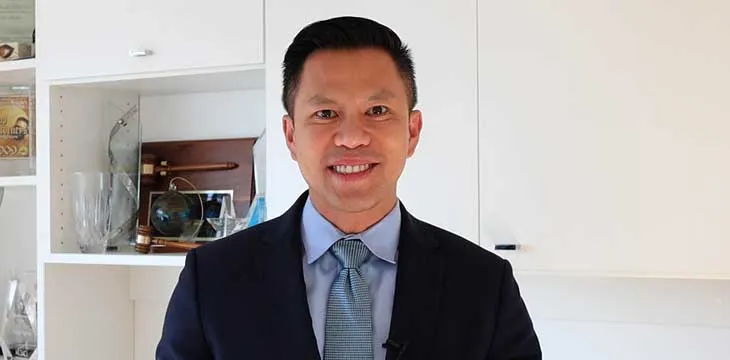|
Getting your Trinity Audio player ready...
|
In this week’s episode of the Bitcoin Vision, Bitcoin Association Founding President Jimmy Nguyen highlights some of the major developments in the Bitcoin SV ecosystem. Having successfully undergone the Quasar protocol upgrade, the Bitcoin SV ecosystem has rapidly continued to grow, with Jimmy looking at the return of OP_RETURN, CityOnChain and Operation Data Blast.
Nguyen begins by discussing the road to Genesis which is slated for February 2020 and the return of OP_RETURN. Citing a blog post by nChain CTO Steve Shadders on the road to Genesis, the Bitcoin Association Founding President urged all developers to familiarize themselves with what is required of them in the lead-up to the eagerly-anticipated network upgrade. App developers making use of OP_RETURN must ensure that their applications maintain consistent behavior now and after the Genesis upgrade.
“So this is a must-read article for any application developer building on Bitcoin SV,” he reiterates. It not only outlines the history of OP_RETURN, but also the easy steps that will ensure developers can continue to build on the only Bitcoin project that unlocks the true power of Bitcoin’s original protocol, design and Satoshi’s vision.
Next, Nguyen looked at Cityonchain, a new online information platform organized around cities, similar to Craigslist in the U.S. and 58.com in China. The platform allows localized functions such as job posts, trading of goods and even online dating. Users can claim ownership of a city and then manage it, earning BSV for their activities.
For the visitors, they can earn BSV for their high quality content such as reviews of local businesses. This helps encourage higher quality content online and fosters local interactions.
However, Cityonchain does more than that. It contributes to BSV’s new earn-and-use model which deviates from the traditional buy-and-hodl model. BSV users get to earn BSV by interacting with online applications which they can then use to make purchases or pay for services. This model is made possible by BSV’s mega blocks and its extremely low fees which facilitate micropayments.
For the week’s Satoshi Shoutout, Jimmy applauds the efforts of the team behind Operation Data Blast. With the recent Quasar protocol upgrade, the block size hard cap increased to 2GB. On July 28, some BSV enthusiasts conducted a user-activated stress test known as Operation Data Blast. They uploaded meaningful media such as video and audio files onto the BSV blockchain. The result was that over 2.5GB worth of data was uploaded and archived on the BSV blockchain. In four instances, the block sizes were over 250MB, a record for a public blockchain. The stress test proved that on-chain scaling is possible and sustainable on a public blockchain.
While you’re at it, also check out the previous episodes of The Bitcoin Vision here.

 08-07-2025
08-07-2025 





